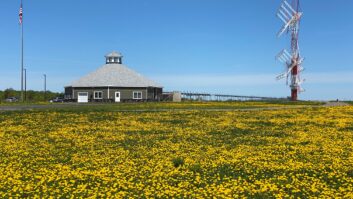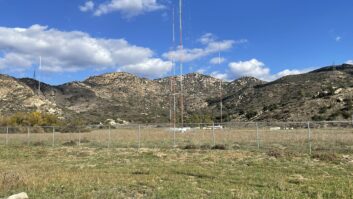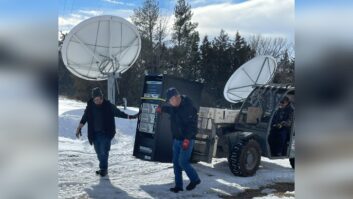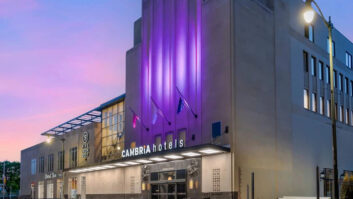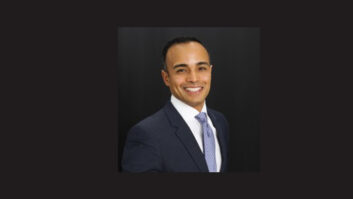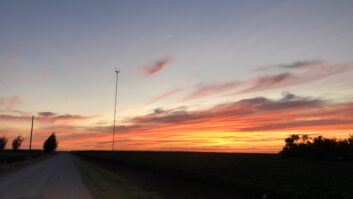The following interview appeared in the recent Radio World eBook “AM Translators: What’s Next?”

Ron Castro is chief technical officer for Results Radio LLC, a family of stations serving the Sacramento Valley in northern California. He wrote the chapter about translators and boosters in the new edition of the NAB Engineering Handbook.
Radio World: Your chapter is more than a dozen pages, so it is a topic we could talk about all day. But in brief, did you learn anything surprising or really important that might help an AM operator avoid pitfalls?
RonCastro: It isn’t too much of a surprise, but building a good facility with the best fidelity possible is a great investment.
If you’re not already originating source material from your studio in stereo, you should start. Feed high-quality, processed audio using the best FM processor you can afford.
Remember that since these are considered “fill-in” translators, you can use any method to deliver audio to the transmitter. You can use analog or digital 950 MHz STL, unlicensed 5 GHz equipment, or if you have a really good, reliable internet service at both the studio and transmitter, preferably from the same service provider, you can take advantage of that.
For translators co-locating on an existing AM tower, be sure to consult an engineer on isolating the FM feedline at the base insulator of the tower and use established best practices for hanging and connecting the feedline to the tower and the AM ground system.
Remember that the FM antenna will retune the AM tower, so you may need to modify the AM license to reflect the new base measurement. This becomes even more critical and complicated if the FM antenna is placed on an AM directional array.

Ron Castro
RW: Once a station has the CP, can you suggest a general outline of how they should go about planning to construct it? How is putting a translator on the air different from building a station from scratch?
Castro: Other than the power rating of the transmitter, transmission line and antenna, there is not a lot of difference. Every installation is unique, but all require reasonable access, good shelter and reliable power.
The FCC rules require that you be able to shut off the translator right away if it’s causing interference, and the translator should also shut down automatically if the primary station goes off the air. The exception to that last rule is that AM daytime-only stations can leave their translators on the air during night hours.
If you’re going to use an RF STL, make sure you have line-of-sight access, and if you’re using 950 MHz, plan on a few weeks to get coordinated and licensed. My chapter in the 10th and 11th editions of the NAB Engineering Handbook goes into much more detail in these areas.
Generally, I would avoid locating on an AM tower if there is any location that’s higher or better situated to cover the target population, such as an established communications site or a location on a much higher hill. If you got the CP issued using the coordinates of the existing AM tower of the station that you will be retransmitting, you might want talk to a consultant and consider your options.
An interesting difference between a translator and a primary station is the FCC legal ID. For primary stations, it’s once an hour and you’re free to include the associated translator call sign and city of license in each ID, but the rules only require that the translator be identified once between 7 a.m. and 9 a.m., once between 12:55 p.m. and 1:05 p.m. and once between 4 p.m. and 6 p.m. (§74.1283). Alternately, you can use an hourly Morse code transmission of the call sign using frequency shift keying or amplitude modulation of the carrier.

Tower workers install a directional translator antenna.
Courtesy Ron Castro
RW: We hear concerns about interference between translators and existing stations. What have you encountered? Should the FCC change its regulations to be more accommodating to new translators, as requested in Aztec Capital Partners’ petition for rulemaking, FCC RM-11786?
Castro: I have had some experience in this area that was cured by relocating the translator antenna to a different position on the same tower. The original location that we inherited from a previous owner at a very large commercial communications site had the directional Log Periodic antenna positioned in such a way that the self-supporting tower members were reradiating the signal in a direction where there should have been a deep null. Moving the antenna to a different leg of the tower fixed that, but the experience did acquaint me with the vagaries, inconsistencies and subjective nature of the existing rules as engendered in §74.1203(a)(3) and §74.1204(f).
The rules need to be updated in order to best use the spectrum, and the suggestions put forth in RM-11786 are a good start. Programing carried by fill-in translators, whether originating from an AM station, an HD2 signal or simply from an analog FM signal that’s blocked by terrain, can be of great value to thousands of listeners, but they cannot have their existence continually threatened by interference complaints from full-service station listeners far outside the protected contour of the full-service station.
Under the current rules, a translator station can be forced off the air by complaints of interference based solely upon one anecdotal report from a person who may have limited or no technical background or who may be using defective, improperly installed, operated or maintained equipment or who may be receiving interference that actually originates from some other source. Translator applicants can be stopped simply because a handful of people sign a boilerplate internet “declaration” claiming to listen to a full-service station in a distant populated area that might receive interference from a proposed translator. The current rules apparently require no specific, objective documentation that can be relied upon by engineering personnel attempting to remediate reports of interference or concerns about potential interference and there is no limit as to how far away a full-service station can claim to have listeners.
The FCC’s contour coverage and interference prediction methodology is woefully outdated, but still works as a pretty good allotment tool. Its advantage is that any engineer can “run the numbers” and come up with substantially the same result as another engineer. Longley-Rice is a big improvement in propagation prediction, and I would hope that crafting a solution that protects primary stations without stifling translators will employ both propagation prediction methods.
The most important aspect should be that objective criteria are used in such a way that any competent engineer can get the same reliable results as any other engineer, and that if the proposed translator passes muster, it can be built, licensed and put on the air with no threat of disruption by complaints from other users of the spectrum.
RW: Are there technical strategies to be aware of that could help an AM station with an FM translator get more impact for its investment?
Castro: As I mentioned, look for the best location and build the best facility you can get. Hire experienced professionals to do the work and resist the urge to cut corners.
In the non-technical area, I have heard from programming people that most of the listeners that an AM station’s FM translator gets in its early months of operation are new listeners, rather than existing listeners who have moved over from the AM side. This gives rise to the need to “promote, promote, promote” every way you possible can. Give the station a local presence and connection to the community, and you can’t go wrong!
RW: Are AM broadcasters finding success with this strategy financially?
Castro: They should be; and if they aren’t now, they will be in time. Having a new FM signal on the dial reenergizes the staff and becomes of more interest to advertising clients. Besides having a larger audience base to sell to advertisers, the facility will be worth far more when it comes time to sell or refinance.
RW: What might broadcasters in other parts of the world learn from this unusual U.S. spectrum policy approach?
Castro: That having programing on both AM and FM can be a valuable resource for many communities, in particular during emergencies like the recent hurricanes that hit Texas and Florida. AM stations often serve communities with formats that are ignored by wide-coverage FM stations, and by having an FM outlet, even one with a small footprint, those AM stations and their formats can remain viable. There are still a lot of AM listeners, especially in places where FM is less viable due to terrain, distance or local interference, and we need to keep the medium alive. FM translators won’t “save” AM radio, but it will keep it healthy for years to come.







